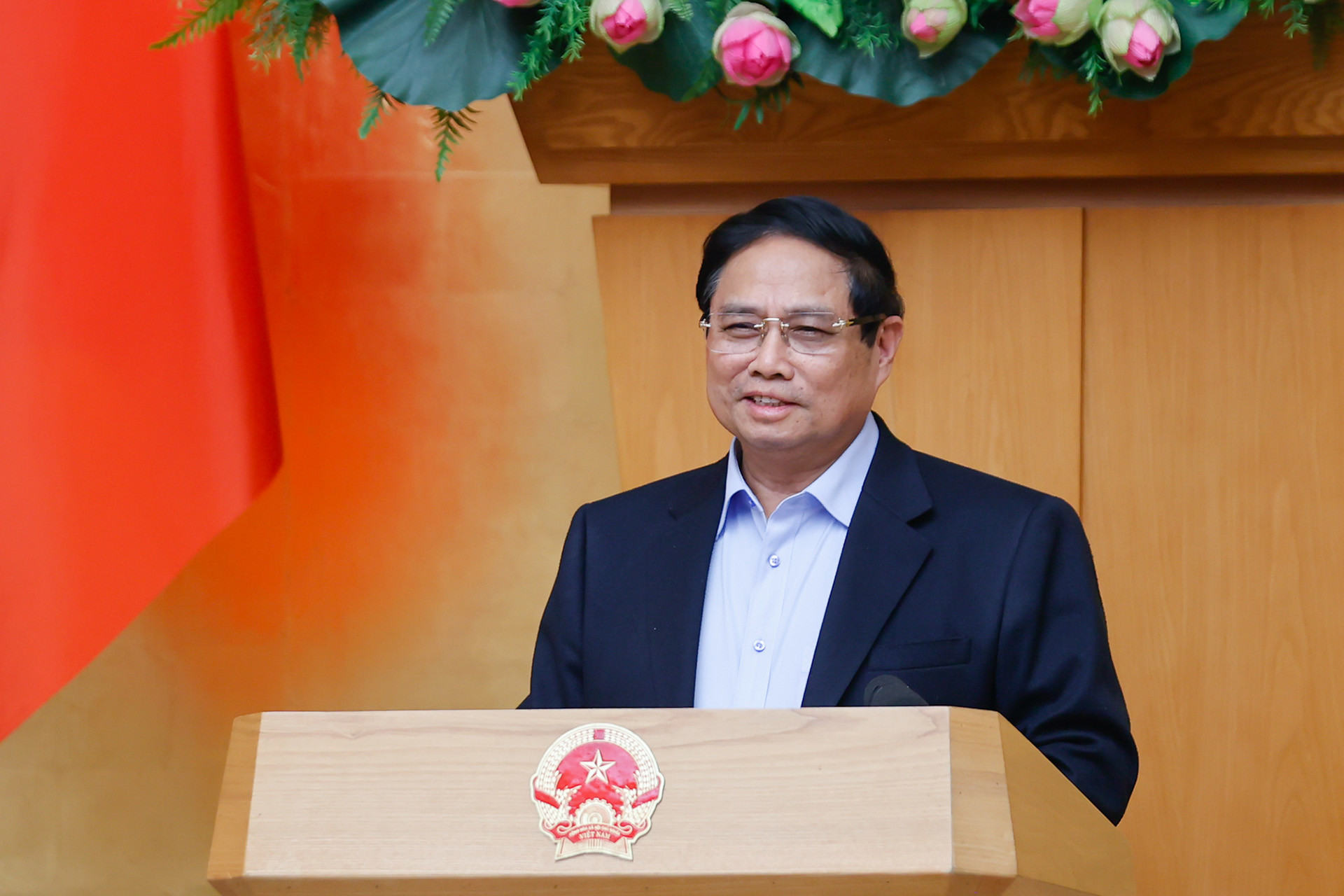On March 8, Prime Minister Pham Minh Chinh chaired a government meeting to assess regional and global economic conditions, address challenges, and outline strategies to achieve 8% GDP growth in 2025, with ambitions for double-digit growth in subsequent years.
The Prime Minister emphasized that this is a challenging yet crucial task, forming part of Vietnam’s long-term strategic development goals.
Enhancing trade cooperation and investment
Prime Minister Chinh stressed the need to accelerate traditional growth drivers - investment, exports, and consumption - while fostering new economic drivers. He called for an innovative approach to economic management that balances growth with macroeconomic stability, inflation control, social equity, and environmental sustainability.
In addition to the three strategic breakthroughs - "transparent institutions, seamless infrastructure, and smart governance and human resources" - the Prime Minister urged the rapid disbursement of public investment and the execution of key national projects. These include financial hubs, free trade zones, railway networks, high-speed rail, and nuclear power plants.
He also highlighted the importance of emerging industries such as semiconductors, artificial intelligence, the Internet of Things, and the digital economy, urging significant investment in scientific and technological advancements to shift toward a green economy, circular economy, and knowledge-based economy.
Strengthening trade ties with China, the U.S., and Europe
Recognizing the critical role of international economic cooperation in driving growth, the Prime Minister called for intensified efforts to expand trade and investment with major partners, including China, the U.S., the EU, Japan, and South Korea.
To enhance Vietnam’s economic resilience and global competitiveness, he emphasized the need to:
Promote balanced trade relations and actively negotiate investment protection agreements with key partners.
Closely monitor global economic trends and adapt policies accordingly, particularly in response to shifts in trade and tariff policies by other nations.
Ensure that trade agreements and foreign investment strategies align with Vietnam’s long-term economic goals.
Developing a trade balance plan with major partners
The Prime Minister urged the development of a comprehensive trade balance plan with key partners, ensuring mutual benefits and addressing trade imbalances.
He also stressed the importance of fully utilizing existing free trade agreements (FTAs) while accelerating negotiations for new agreements to diversify markets and supply chains.
Additionally, the government will review and, if necessary, adjust tax policies related to major trade partners to support economic growth while maintaining fair trade practices.
Prime Minister Chinh instructed ministries and local governments to proactively resolve pending foreign investment projects and create favorable conditions for international businesses to expand operations in Vietnam.
This includes facilitating the integration of Vietnamese businesses into global supply chains and addressing concerns related to work permits and visas for foreign investors and workers.
Tran Thuong
